Ruby Powering Web Development

Ruby is a dynamic, object-oriented programming language known for its elegant syntax and flexibility. With its concise and expressive code, Ruby offers developers a productive and enjoyable programming experience. In this article, we will dive into the language’s key features and syntax, showcasing its power in creating robust web applications.
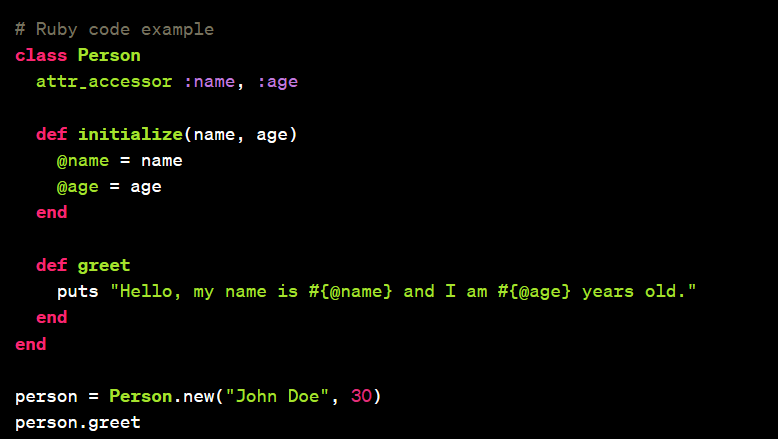
Exploring the latest features in Ruby 3.1
Ruby 3.1 introduces exciting new features and enhancements that further elevate the language’s capabilities. From performance improvements to language refinements, Ruby 3.1 empowers developers to write more efficient and maintainable code. In this section, we will explore some of the notable features introduced in Ruby 3.1.
Example:

Building web applications with Ruby on Rails
Ruby on Rails, commonly known as Rails, is a popular web development framework built on top of the Ruby language. It follows the Model-View-Controller (MVC) architectural pattern, providing developers with a structured and efficient approach to building web applications. In this section, we will explore the fundamentals of Rails and demonstrate how to create a basic web application.
Example:

Understanding the Model-View-Controller (MVC) architecture in Rails
The Model-View-Controller (MVC) architecture is a cornerstone of Rails development. It separates the application’s logic into three interconnected components: the Model, responsible for data management; the View, responsible for user interface presentation; and the Controller, responsible for handling user requests and coordinating the Model and View. In this section, we will delve into the MVC architecture in Rails and its benefits for building scalable and maintainable applications.
Example:
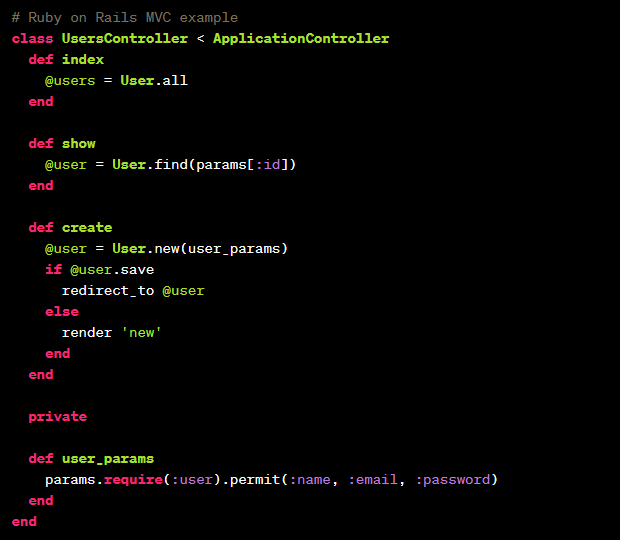
Exploring Active Record and database migrations in Rails
Active Record is Rails’ Object-Relational Mapping (ORM) framework that simplifies database interactions and allows developers to work with databases using Ruby code instead of SQL. Database migrations provide a convenient way to manage changes to the database schema over time. In this section, we will explore how to use Active Record to interact with the database and perform migrations in Rails.
Example:
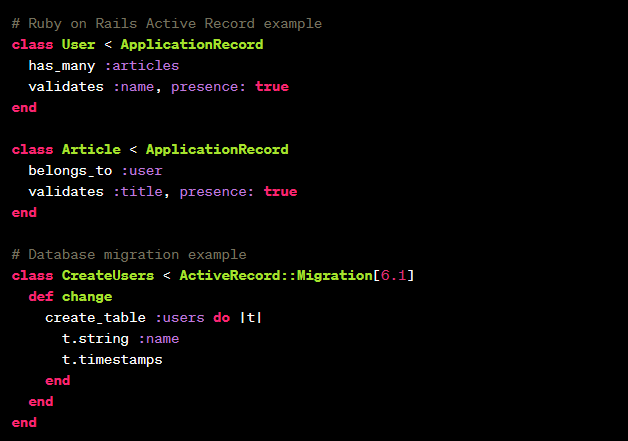
Implementing authentication and authorization in Rails applications
Authentication and authorization are essential components of many web applications. Rails provide various gems and techniques to implement user authentication and control access to resources. In this section, we will explore how to integrate authentication and authorization functionality into a Rails application, ensuring secure access to sensitive data.
Example:

Using Rails generators for rapid application development
Rails generators are powerful tools that automate the creation of files and boilerplate code, allowing developers to rapidly build new features and components. In this section, we will explore how to leverage Rails generators to streamline the development process and increase productivity.
Example:

Testing strategies and best practices in Ruby and Rails
Testing is a crucial aspect of software development to ensure code correctness and maintainability. Ruby and Rails offer a wide range of testing frameworks and libraries to support different testing strategies. In this section, we will explore testing methodologies, including unit testing, integration testing, and behavior-driven development (BDD), along with best practices for testing Ruby and Rails applications.
Example:
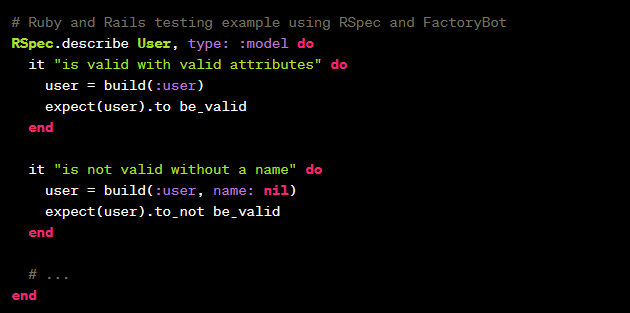
Performance optimization techniques in Ruby and Rails
Optimizing performance is crucial for delivering fast and responsive web applications. Ruby and Rails provide several techniques and tools to improve performance, including caching, database optimization, and code profiling. In this section, we will explore performance optimization strategies and best practices specific to Ruby and Rails, ensuring your applications run smoothly even under heavy loads.
Example:
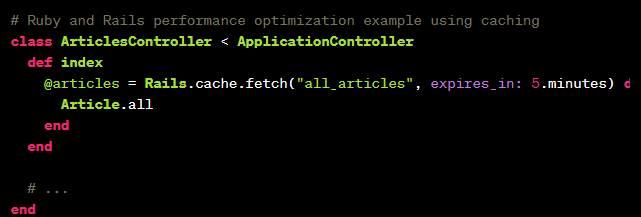
Building RESTful APIs with Rails and JSON
RESTful APIs have become the standard for building web services. Rails provide excellent support for developing RESTful APIs, allowing you to expose resources and interact with them using JSON (JavaScript Object Notation). In this section, we will explore how to build a RESTful API with Rails and use JSON to transmit data between the server and the client.
Example:
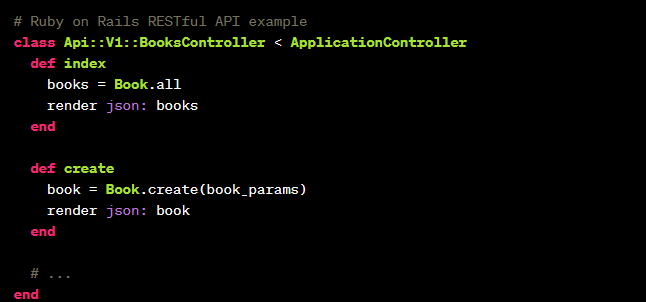
Real-time application development with Rails and WebSockets
Real-time applications require live updates and bidirectional communication between the server and clients. Rails provide Action Cable, a built-in framework for handling WebSockets, enabling real-time features in your applications. In this section, we will explore how to leverage Action Cable to build real-time functionality in Rails applications.
Example:
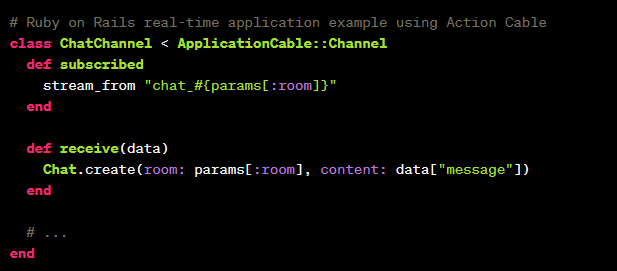
Deploying Rails applications to cloud platforms like AWS or Heroku
Deploying Rails applications to the cloud allows for scalability, reliability, and ease of management. Popular cloud platforms like AWS (Amazon Web Services) and Heroku provide robust infrastructure and deployment tools for Rails applications. In this section, we will explore how to deploy a Rails application to the cloud, taking advantage of the platform’s features.
Example:

Building scalable and maintainable Ruby and Rails applications
Building scalable and maintainable applications is crucial for long-term success. In this section, we will discuss architectural patterns, design principles, and best practices to ensure your Ruby and Rails applications are scalable, modular, and easy to maintain. From choosing the right abstractions to decoupling components, we will cover various techniques for building robust and sustainable applications.
Example:
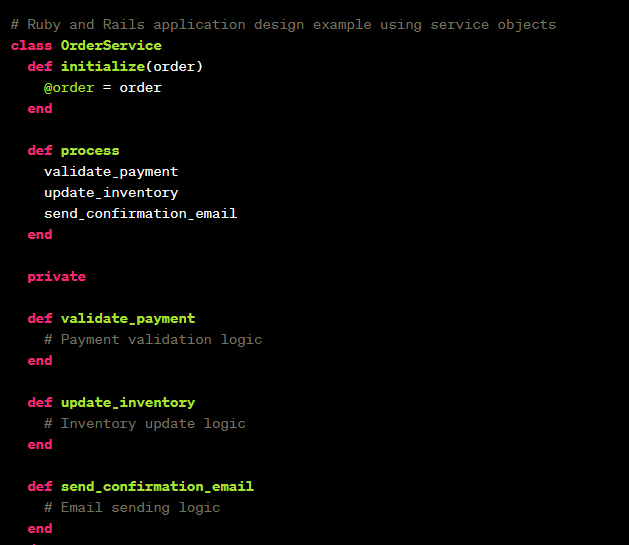
Integrating third-party APIs in Rails applications
Many applications rely on integrating with third-party APIs to extend functionality or retrieve external data. Rails provide convenient ways to interact with external APIs, such as RESTful HTTP APIs or SOAP-based web services. In this section, we will explore how to integrate third-party APIs into Rails applications, showcasing examples of popular API integrations.
Example:

Building GraphQL APIs with Ruby and Rails
GraphQL is a modern query language and runtime for APIs that offers flexibility and efficiency in data retrieval. With the help of GraphQL libraries and tools, such as the graphql-ruby gem, you can build powerful APIs in Ruby and Rails. In this section, we will explore how to create a GraphQL API using Ruby and Rails, highlighting the benefits and features of GraphQL.
Example:
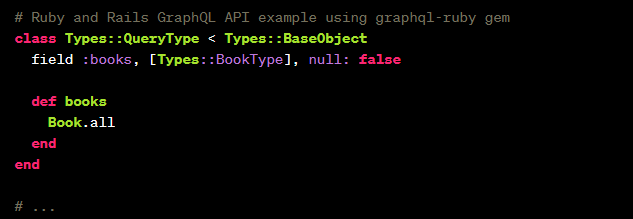
Using Action Cable for WebSocket communication in Rails
WebSockets enable real-time bidirectional communication between clients and servers, making them ideal for applications that require instant updates. Rails’ Action Cable framework simplifies WebSocket integration, allowing you to build real-time features in your Rails applications. In this section, we will explore how to use Action Cable for WebSocket communication in Rails, demonstrating the power of live updates.
Example:
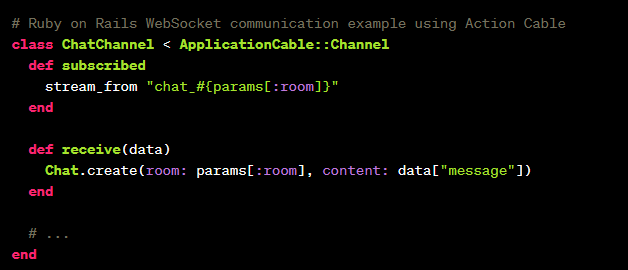
Exploring modern frontend frameworks with Rails, like React or Vue.js
To enhance the user experience and build dynamic interfaces, integrating modern frontend frameworks with Rails can be beneficial. Frameworks like React or Vue.js can seamlessly work together with Rails, offering powerful front-end capabilities. In this section, we will explore how to integrate popular frontend frameworks with Rails, showcasing examples and highlighting the advantages of combining both technologies.
Example:

Implementing background jobs and task scheduling in Rails applications
Background jobs and task scheduling are essential for handling time-consuming or recurring tasks without impacting the user experience. Rails provide libraries like Sidekiq, Resque, or Delayed Job for managing background jobs and scheduling tasks. In this section, we will explore how to implement background jobs and task scheduling in Rails applications, ensuring efficient and reliable task execution.
Example:

Using caching strategies for improved performance in Rails
Caching can significantly enhance the performance of Rails applications by storing frequently accessed data in memory. Rails provide built-in caching mechanisms that can be utilized to cache database queries, view fragments, or even entire pages. In this section, we will explore caching strategies in Rails and demonstrate how to implement caching techniques to optimize your application’s performance.
Example:

Security best practices for Ruby and Rails applications
Securing web applications is of paramount importance to protect sensitive user data and prevent security breaches. Ruby and Rails offer various security features and best practices to ensure the safety of your applications, such as input validation, parameter sanitization, and protection against common vulnerabilities. In this section, we will discuss security best practices and techniques specific to Ruby and Rails applications.
Example:
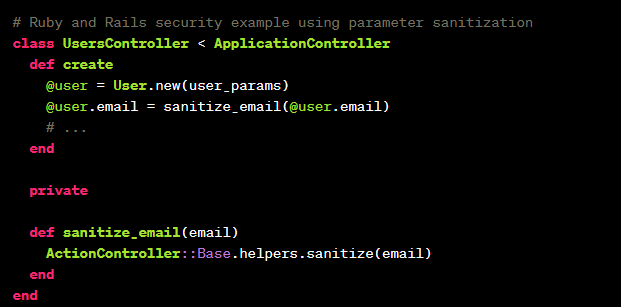
These topics cover the latest trends and advancements in Ruby and Rails as of 2023. By exploring these concepts and implementing the provided code examples, you’ll gain a solid understanding of the features, tools, and best practices that contribute to building robust, efficient, and secure Ruby and Rails applications.
